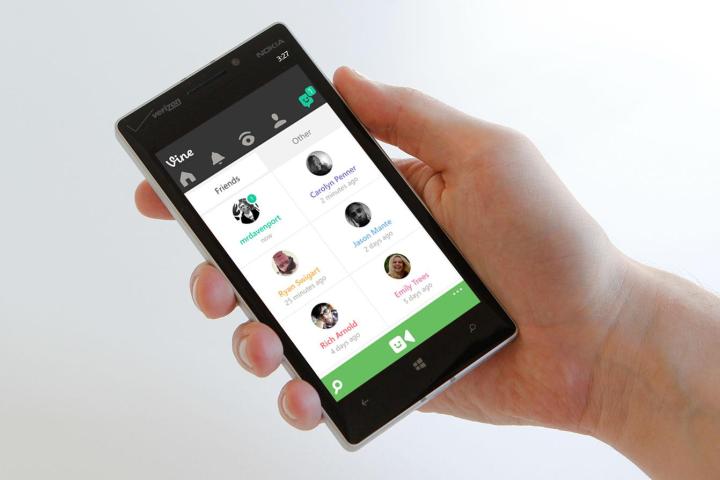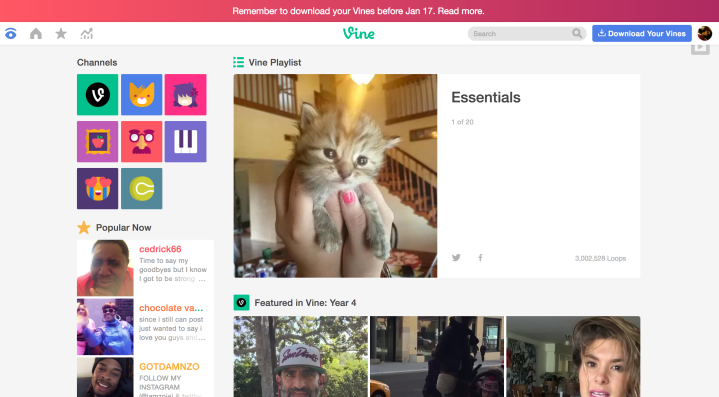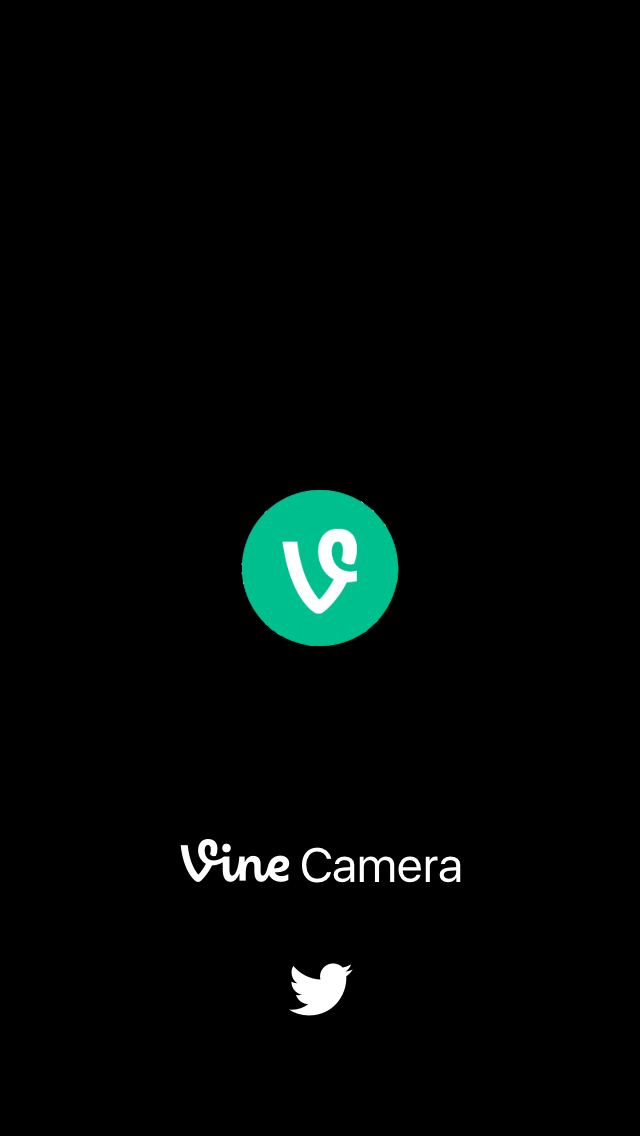
If you’re looking to save all your old files, you can download them to your smartphone from the Vine iOS and Android apps (if you haven’t yet updated to Vine Camera), and to your desktop via the web. Additionally, you can request to have an email link containing all your prior uploads sent to you — this option will include an index.html file that contains your Vine captions, along with the number of likes, comments, and re-Vines.

As it turns out, Twitter is now looping all short-form videos (6.5 seconds and under) on its service, no matter their origin.
The new Vine Camera app itself is pretty straightforward. It essentially offers the ability to record videos using your front and rear-facing cameras by pressing down on your smartphone screen (as you did with Vine). There are a limited number of editing options available, and the ability to save your creations to your phone’s library, or share them on Twitter with a 140-character caption.
Twitter broke millions of hearts earlier in 2016 when it announced it was shutting down its Vine platform. The stagnant app had been hemorrhaging users and was too costly to keep running. Following an online outcry and an outpouring of love, it seems Twitter decided to save the video-looping service — albeit in a new form that could prove more cost-efficient.
Bearing in mind that Vine’s servers, staff, and general upkeep costs were reportedly setting its parent company back $10 million per month, the move came across as a compromise on Twitter’s part.
At this stage, it remains unclear whether Twitter still plans to sell the platform (reports emerged in November claiming Twitter had several takeover bids on the table). Perhaps Twitter is still keen to see if it can gain some leverage from the app — after all, it was reportedly only receiving offers in the range of $10 million.
Overall, the decision to salvage the app (albeit in a stripped-down form) ties into Twitter’s overarching video strategy, which has seen it introduce user-generated and third-party live video to its service.
Tapping its remaining Viners to continue creating content could see the short-form video format live on through its service — diversifying its video lineup in the process. The only problem is that Vine’s biggest creators (such as Logan Paul, King Bach, Lele Pons, and Zach King) have already moved on to other platforms, some of which (YouTube Red and Facebook Live, for example) are doling out cash for their services. The reason they ditched Vine in the first place was due to Twitter’s alleged refusal to grant them more revenue-sharing solutions, so it seems unlikely they will return to the app in the near future.
Updated 01/05/2017 by Saqib Shah: Added info of official shutdown date for Vine app. Updated 01/17/2017 by Saqib Shah: Added news of Vine Camera availability.
Editors' Recommendations
- Elon Musk considers bringing Vine back from the dead
- Netflix ends free one-month trial, but there’s still a way to watch free stuff
- Vine co-founder launches beta test for new video-looping app Byte



